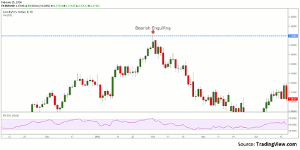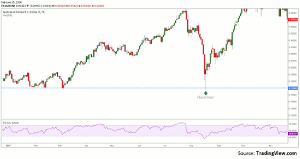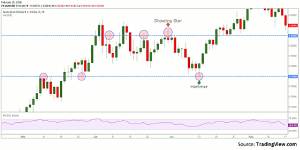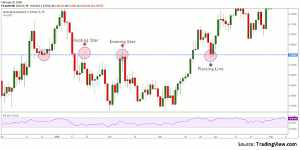Candlestick charts offers information on price action, which traders can use to identify high-probability trades, notes the staff at Investazor.com.
In this article, we will show you where to look for the candlestick patterns, which have higher probability to signal a good trade. It is very important to know that such a pattern gives a stronger signal if it is formed on a higher time frame and if it appears after a clear up/down move. Other important factors that raise the probability are the technical elements like support/resistance, Fibonacci, oscillators, moving averages, and other type of instruments. I will tell you more now how to trade candlestick patterns at key level support and resistances.
Support – it is a relevant price level for the future price action, because it has triggered a reaction in the past. It is expected to act as a floor next time the price will hit it. The support level is more important if it has resisted in time, if it is found on a higher time frame, and if it was touched more than two times.
Resistance – it is a relevant price level for the future price action, because it has triggered a reaction in the past. It is expected to act as a ceiling next time the price will hit it. The resistance level is more important if it has resisted in time, if it is found on higher time frame, and if it was touched more than two times.
As you can see the definitions are pretty the same. It only differs from where the price will hit the level. If the price falls, it is expected to be stopped by a support; if it rises, it is expected to be stopped by a resistance. Usually a broken support becomes resistance, while a broken resistance becomes support. Ex tops or bottoms can become support/resistance and also very important are round numbers because they have a heavier psychological implication.
To understand why this support/resistance works, we should bear in mind that at those levels, the collective memory works. If at some point the price was rejected from a certain level, investors will know and will react again when the price touches it. For better understanding, we will make this short comparison. If someone touches something, without knowing the fact that it is very hot, he will burn himself. Because it provokes pain, the next time, he will be more attentive before touching it. This is how support/resistance works in most cases.
Below, you will see several examples of candlestick patterns at important support and resistance levels:
So now that you know that candlestick patterns will have a higher probability if found at important support/resistance levels, we will give you an example on how to trade such a setup.
In our last image above, you saw a shooting star pattern drawn at a round level, 0.8400, which was tested in the past as resistance. When the day closes and confirms the reversal pattern, a trader should open a trade on the opening of the next day (or trading session if he will use a different time frame). The stop loss should be set above the candlestick’s upper shadow. If the price breaks above its high, then the reversal pattern will be invalidated. The take-profit is not given by this pattern, so a trader should find a near-term support and set it around it.
The trade setups based on this technical combination are very easy to find and profit from. We recommend that you not take it for granted. To find the best setups and make money from trading them, you should first practice on demo accounts, set up money management systems to work with this kind of trading strategies, and after that try trading real money.
By the Staff at Investazor.com
















